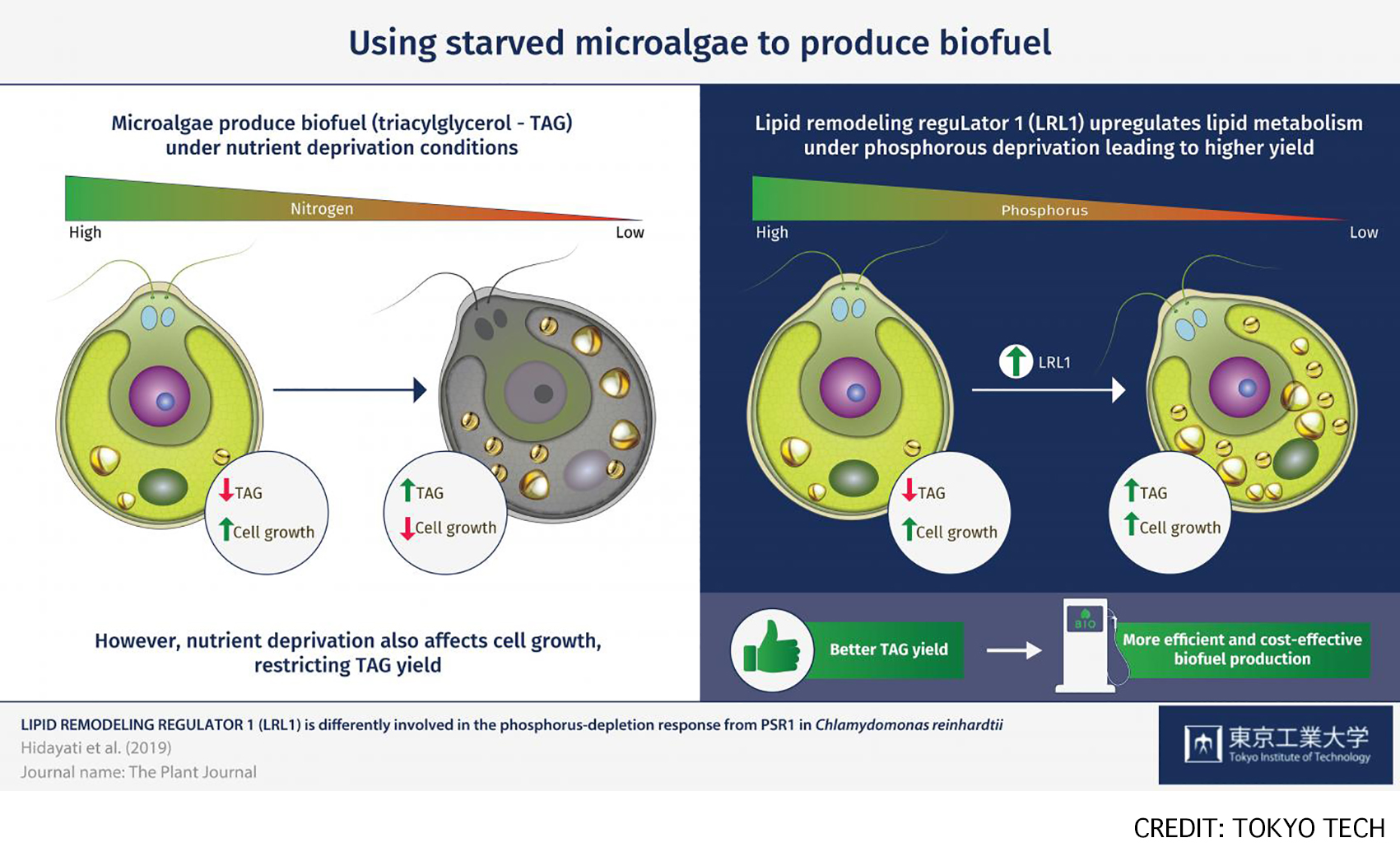Protein factors increasing yield of a biofuel precursor in microscopic algae
Press release
LIPID REMODELING REGULATOR 1 (LRL1) is differently involved in the phosphorus-depletion response from PSR1 in Chlamydomonas reinhardtii
Nur Akmalia Hidayati, Yui Yamada-Oshima, Iwai Masako, Takashi Yamano, Masataka Kajikawa, Nozomu Sakurai, Kunihiro Suda, Kanami Sesoko, Koichi Hori, Takeshi Obayashi, Mie Shimojima, Hideya Fukuzawa, Hiroyuki Ohta
The Plant Journal 27 July 2019 DOI:10.1111/tpj.14473
EurekAlert! link about this artcle
As an alternative to traditional fossil fuels, biofuels represent a more environmentally friendly and sustainable fuel source. Plant or animal fats can be converted to biofuels through a process called transesterification. In particular, the storage molecule triacylglycerol (TAG), found in microscopic algae, is one of the most promising sources of fat for biofuel production, as microalgae are small, easy to grow, and reproduce quickly. Therefore, increasing the yield of TAG from microalgae could improve biofuel production processes. With this ultimate goal in mind, Professor Hiroyuki Ohta from the Tokyo Institute of Technology and colleagues investigated the conditions under which the model microalga Chlamydomonas reinhardtii produces more TAG. read more>
This research was published in The Plant Journal at 27 July 2019.
You can get the tools and databases that was the basis for metabolome analysis in this research from the following site. KOMICS (The Kazusa Metabolomics Portal)

Fig: Microalgae are a promising source of biofuel feedstock, as they produce triacylglycerol (TAG) as a major storage lipid, especially under nutrient-depleted conditions. LRL1 was involved in the regulatory mechanism during the later stage of P-starvation in C. reinhardtii, as its regulation might depend on P-status, cell growth, and other factors.















